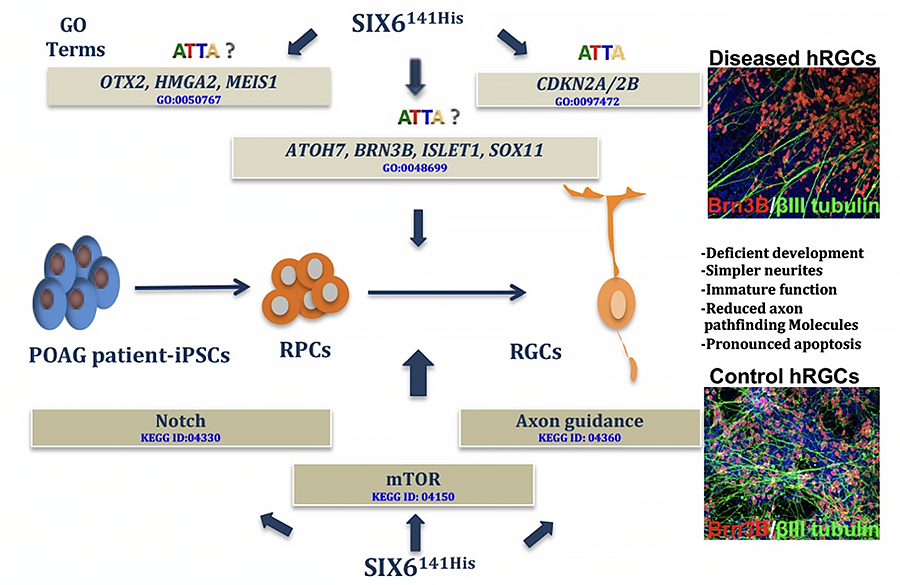Disease in a Dish Model

Figure shows schematic of outcome of modeling of SIX6risk allele POAG of abnormal diseased hRGCs (image: Ahmad).
Modeling degenerative retinal diseases
One of the most practical uses of the iPSC technology for regenerative medicine is the creation of disease in a dish model of intractable degenerative blinding diseases, such as retinitis pigmentosa (RP) and glaucoma. RP, where rod photoreceptors selectively degenerate, is due to mutations in more than 50 different genes, inherited either in an autosomal dominant, an autosomal recessive or an Xlinked pattern. Whether or not there is a common final pathway to degeneration or different gene mutations are pathogenic to specific pathways remain ill-defined and this information may hold key to therapeutic approaches. Glaucoma, where RGC progressively degenerate, is associated with high intraocular pressure (IOP), which is thought to initiate degenerative changes. However, one third of glaucoma patients have normal IOP and yet RGCs degenerate, which taken together suggest that RGCs are intrinsically vulnerable in glaucoma. Since RGCs are born embryonically and glaucoma is primarily an adult onset disease the knowledge about RGC susceptibility to degeneration, which holds the key to understanding the disease process and formulating therapeutic approaches, remains speculative and rudimentary. We are using iPSC technology to model RP and glaucoma. For example, we have generated primary open angle glaucoma (POAG) patient-specific iPSC with single nucleotide polymorphism (SNP) in SIX6 gene (e.g., SIX6 risk allele) and demonstrated that patient-specific RGCs were deficient developmentally, with morphological and functional abnormalities, compared to controls. The disease modeling identified potential molecular targets (such Notch and mTOR signaling) that are pathologically influenced in patient-specific RGCs. We are currently modeling POAG due to mutation in MYOC gene with the gene-corrected isogenic controls. Figure shows schematic of outcome of modeling of SIX6risk allele POAG of abnormal diseased hRGCs.